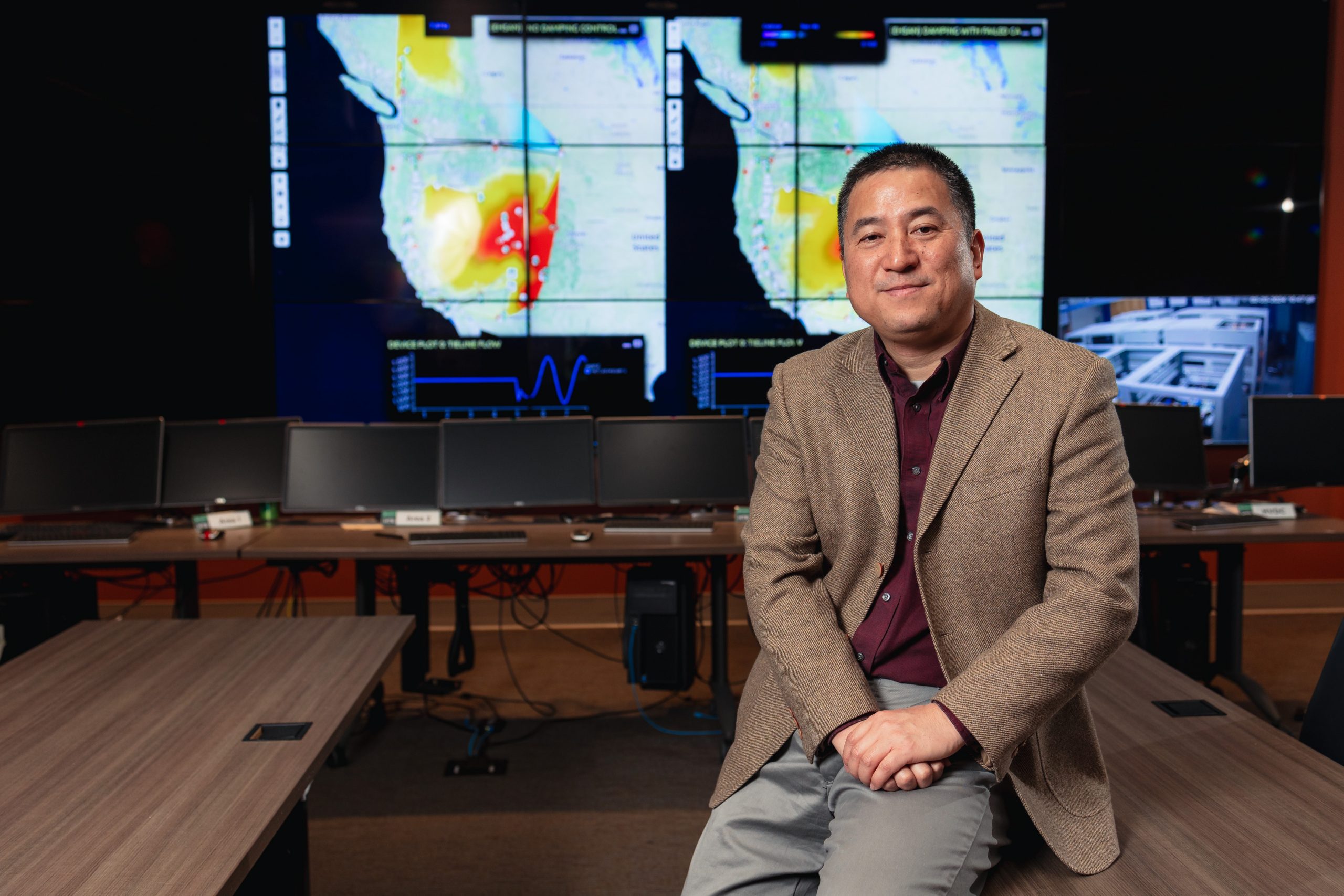Possessing a deep appreciation for the past and a bold vision for the future, Fran Li has been appointed as the new director of the Center for Ultra-Wide-Area Resilient Electrical Energy Transmission Networks(CURENT).
CURENT, which is widely recognized as one of the top power and energy centers in the world, is a graduated National Science Foundation (NFS) Engineering Research Center that was jointly supported by the NSF and Department of Energy (DOE) from 2011 to 2021 before becoming self-sustaining.
Who is Fran Li?
Li, a John W. Fisher professor in the Min H. Kao Department of Electrical Engineering and Computer Science (EECS), is succeeding Kevin Tomsovic, a Chancellor’s Professor and a member of the US National Academy of Engineering (NAE), who is stepping down as director after leading CURENT since the center’s inception in 2011. Tomsovic will remain on the faculty team.
Li was one of the five founding faculty members at CURENT and served as the center’s education director from 2011–14 before becoming UT campus director of CURENT.
“I really have roots with the center, and I have seen the power program grow through the CURENT center. Under Tomsovic’s leadership, the center promoted our power program to a new level,” Li said. “It’s the top in the nation, and I want to continue Dr. Tomsovic’s legacy and maybe expand the center’s research scope to solve new emerging challenges related to electrical power.”
Purpose of CURENT
A collaboration between academia, industry, and national laboratories, CURENT is led by UT with partner institutions that include Northeastern University, Rensselaer Polytechnic Institute (RPI), and Tuskegee University.
CURENT’s vision is to have a nationwide or continent-wide transmission grid that is fully monitored and dynamically controlled in real-time for high efficiency, high reliability, low cost, better accommodation of renewable energy sources, full utilization of energy storage, and accommodation of responsive load.
The center aspires to educate a new generation of electric power and energy systems engineering leaders with global perspectives and diverse backgrounds.

CURENT has established industry partnerships with more than 30 members and published more than 100 papers each year. Since its inception, the award-winning center has more than 40 awarded patents and has educated more than 130 PhD students and 100 master’s students.
The CURENT faculty at UT includes one Governor’s Chair, two Chancellor’s professors, and six named professors. Two of them are NAE members and are fellows of the Electrical and Electronics Engineers (IEEE).
“I look forward to hearing Dr. Li’s ideas about how we can build on the legacy of CURENT and become more impactful,” Tomsovic said. “Fran’s background in electricity markets, distribution systems, and home energy management provides needed to expertise to grow the research portfolio.”
History of Li’s Career
Li received his bachelor’s and master’s degrees from Southeast University in Nanjing, China, and his PhD from Virginia Tech.
He joined EECS at UT in 2005 as an assistant professor. He was promoted to associate professor in 2011, a full professor in 2016, and an endowed professor in 2017.
Li’s research interests include grid resilience, electricity markets, microgrid, and power system computing. He has published more than 200 journal papers with an H-index of 72 and a total citation count of more than 20,000. His total research funding since 2010 is more than $10 million of his own share.
Li has been serving as editor in chief of IEEE Open Access Journal of Power and Energy since 2020. He was elected as an IEEE Fellow in 2016 and received the prestigious R&D 100 Award in 2020. Li is a registered professional engineer in the state of North Carolina and the holder of five US patents.
“Fran Li was a founding member of CURENT in 2011 and has led the development of a large-scale testbed for the future power grid with a high penetration of renewable energy sources,” said Leon Tolbert, chancellor’s professor and interim EECS department head. “I look forward to continue working with Fran as he leads us into new research directions in transportation electrification and its grid impacts, grid reliability and resiliency, and machine learning grid applications.”
Having been on the ground floor of the initial planning for CURENT 15 years ago, Li takes great pride in seeing how much the center has evolved. He has a longstanding investment in CURENT’s success and wants to see the center remain a leader in its field under his stewardship.
“CURENT is really like our home. I know some outside people view us as a really big family,” Li said. “I certainly feel more responsibility to keep that same sentiment while working toward a common goal of making our energy future more resilient and sustainable.”
